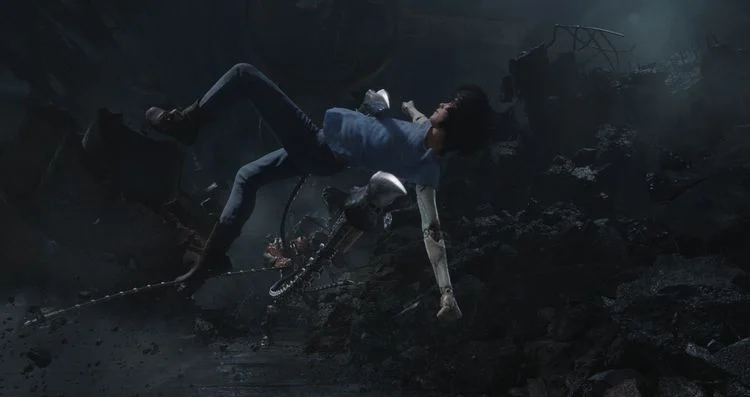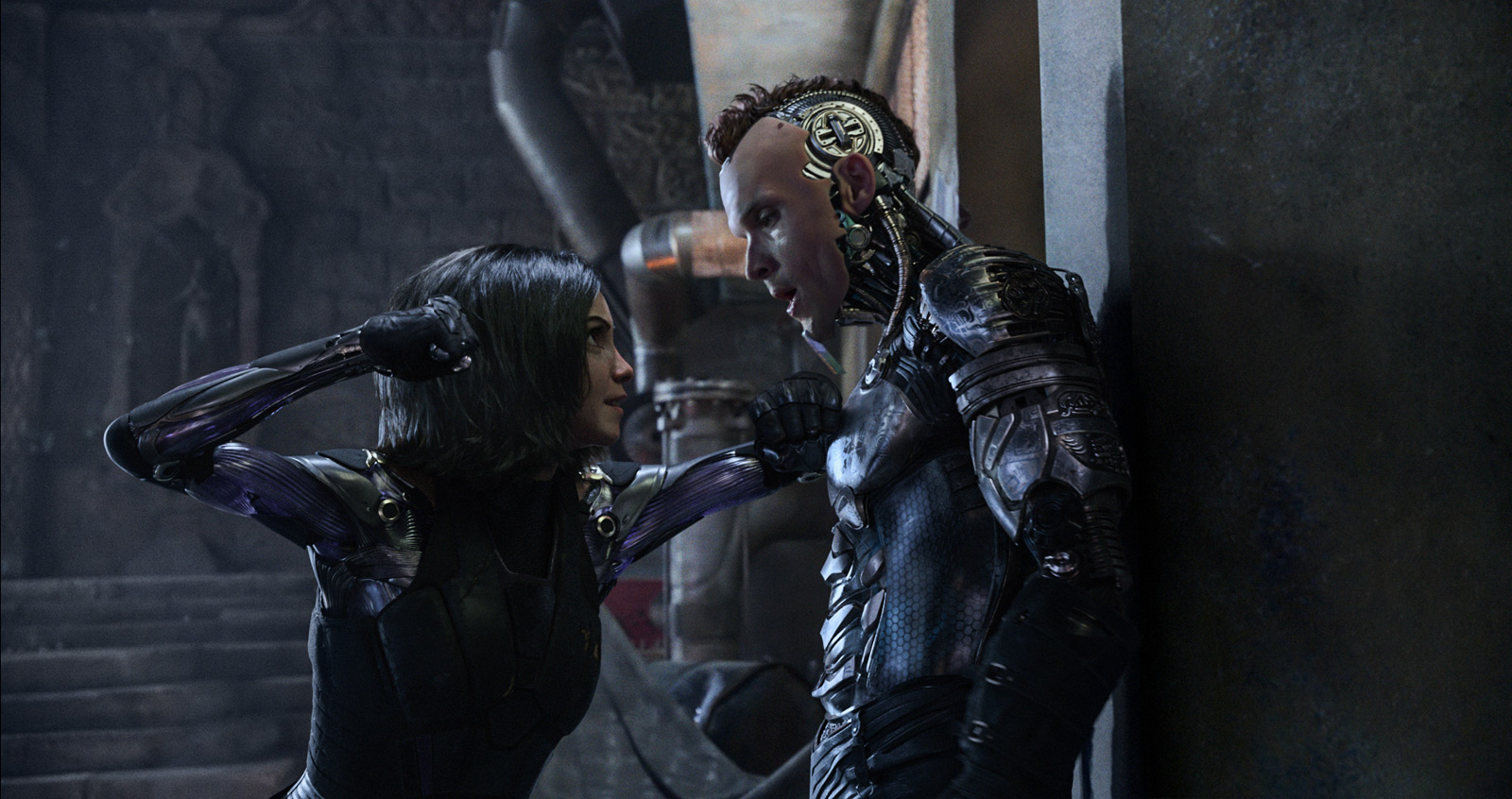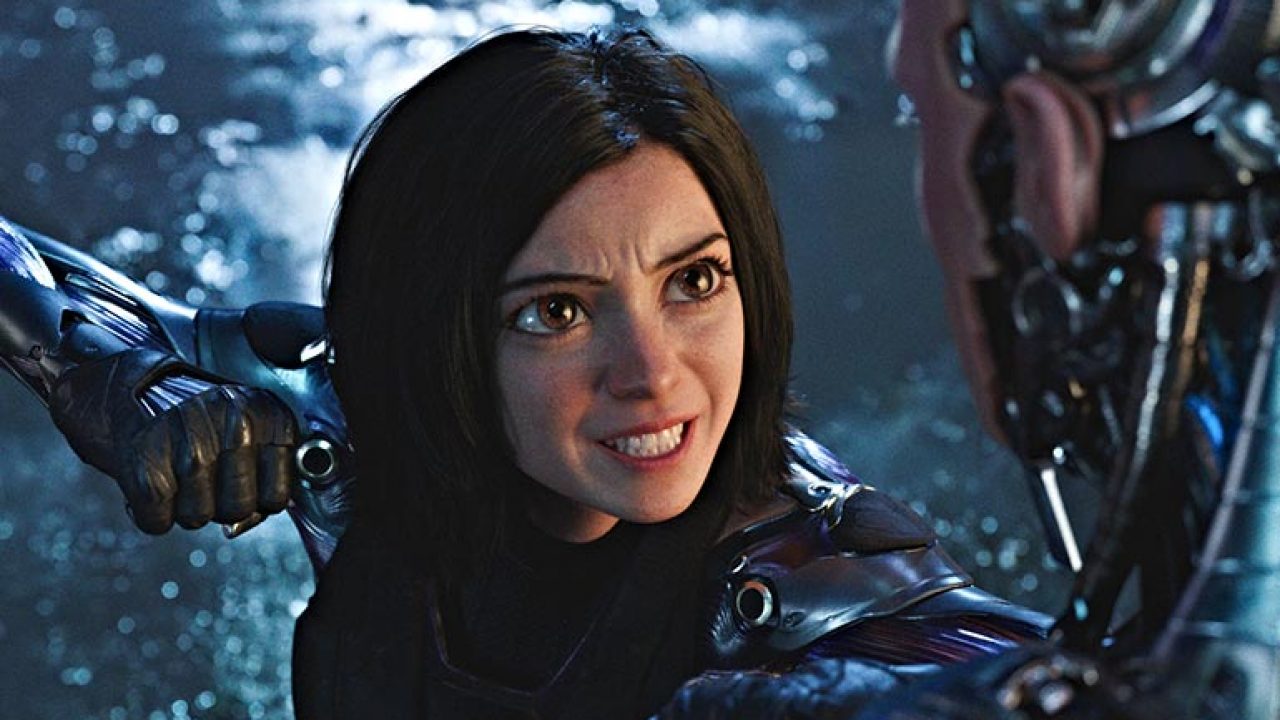Alita: Battle Angel (2019)

Alita: Battle Angel (2019), directed by Robert Rodriguez and produced by James Cameron, is a visually stunning adaptation of Yukito Kishiro’s manga Battle Angel Alita. Combining breathtaking CGI with a heartfelt narrative, the film is a sci-fi action epic set in a dystopian future where a young cyborg embarks on a journey of self-discovery, love, and survival.
The story begins in the year 2563, in the aftermath of a catastrophic war known as “The Fall.” Dr. Dyson Ido (Christoph Waltz), a compassionate cyberneticist, discovers a disembodied cyborg in a junkyard beneath the floating city of Zalem. He restores her and names her Alita (Rosa Salazar). With no memory of her past but possessing advanced combat skills, Alita struggles to find her identity in Iron City, a sprawling metropolis dominated by inequality and danger.
As Alita begins to piece together fragments of her past, she discovers that she is a highly advanced warrior from an ancient era. Her search for purpose leads her into the brutal world of Motorball, a deadly sport that serves as a pathway to Zalem, and pits her against formidable enemies sent by Nova, a mysterious figure controlling events from above.
Rosa Salazar delivers a standout performance as Alita, brought to life through groundbreaking motion capture technology. Her portrayal blends innocence and ferocity, making Alita both relatable and awe-inspiring. The visual effects, particularly in Alita’s expressive eyes and fluid combat movements, are a testament to the cutting-edge work of Weta Digital, immersing viewers in a richly detailed world.
Christoph Waltz provides a warm and grounded performance as Dr. Ido, serving as both a mentor and father figure to Alita. Mahershala Ali as Vector, a cunning and calculating businessman, and Jennifer Connelly as Chiren, Ido’s estranged wife, add layers of intrigue to the story. Keean Johnson plays Hugo, a street-smart young man who becomes Alita’s love interest, offering a human connection that drives much of her emotional growth.
The film’s action sequences are exhilarating, blending fast-paced choreography with stunning visual effects. Highlights include Alita’s Motorball matches and her battles with cyborg adversaries, which showcase her agility, strength, and tactical brilliance. The combat is both visceral and stylish, balancing raw power with elegance.
The world-building in Alita: Battle Angel is one of its strongest aspects. Iron City is a vibrant, chaotic environment filled with diverse inhabitants and rich details that ground the futuristic setting. The contrast between the gritty streets of Iron City and the enigmatic allure of Zalem underscores the film’s exploration of social disparity.
At its core, Alita: Battle Angel is a story about identity, resilience, and the fight for freedom. Alita’s journey from an amnesiac cyborg to a self-aware warrior mirrors a universal quest for purpose and belonging. Her determination to protect those she loves and challenge oppressive forces makes her an inspiring protagonist.
Critics praised the film’s visual achievements and Salazar’s performance but had mixed reactions to its narrative. While some found the story engaging, others felt it left certain plot threads unresolved, setting up a sequel that has yet to materialize. Despite this, the film has garnered a passionate fan base, with many calling for a continuation of Alita’s story.
Alita: Battle Angel is a dazzling and emotional sci-fi spectacle that blends cutting-edge technology with timeless themes. It invites viewers to explore a richly crafted world while rooting for a heroine whose strength and vulnerability resonate deeply. Whether for its jaw-dropping visuals or its heartfelt story, the film leaves a lasting impression as a bold and ambitious cinematic experience.











